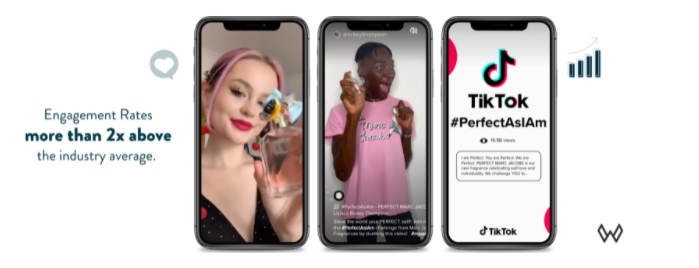Brand Advocacy and New Technology Will Super-Charge Influencer Marketing in 2022
Today, the global influencer market is worth a record $13.8 billion and is set to reach a staggering $84.89 billion by 2028. Furthermore, 86% of consumers say they prefer using social media for purchase inspiration. For brands, this means influencer marketing is no longer a nice-to-have, it’s a necessity. Coming under the umbrella of ‘influencer marketing’, brand advocacy – a potent hybrid of influencer marketing and consumer-to-consumer (C2C) marketing – is often overlooked.
According to research by Wearisma and Dectech, the majority of consumers (71%) trust content from people they know (C2C marketing) more than content from brands (36%). Furthermore, organic content generates 20 times the media value compared to paid content. In order to thrive in the increasingly competitive social media landscape, brands need to embrace brand advocacy strategies that incorporate both influencers and consumers in order to maximize revenue.
Martech News: MarTech Mention Me Secures $25 Million in Series B Funding Round
The Power Is Not Just in the Platform
Over the past few years, we’ve been bombarded with statistics about the growth in the number of social media users across all platforms and promises of ‘uncompromised scale’ and performance. Today, the tables have turned and the power has shifted to influencers, brand advocates, and content creators. The challenge for brands is knowing which influencers or content creators to work with, and identifying those who have an authentic connection with the brand is critical.
In 2021, COTY UK, a global beauty company making cosmetic, skin, fragrance, and hair brands, found success working with both influencer and consumer content creators to promote Marc Jacob’s fragrance Perfect on TikTok achieving engagement rates more than two times above the industry average. Grace Fung, COTY’s Influencer Marketing and Comms Lead, attributes the success of the campaign to the “authenticity of the people featured in the campaign and building long-lasting relationships with those that advocate for their brand.” What COTY did really well was moving away from marketing that focussed purely on product imagery and price and instead explored consumers’ real-life experience with the fragrance.

Diversity and Inclusion
As the number of social media content creators continues to grow, so does the number of potential brand advocates available to brands. This provides brands with an opportunity to build relationships with advocates from diverse communities of both influencers and consumers.
Research shows that consumers are increasingly interested in consuming content from across the globe, and they want to see new and exciting content from different cultures. As brands continue to invest more in influencer marketing, it’s vital to ensure that the approach fulfills the ethical and equality-driven expectations rightly placed on the industry. Failure to do so can harm a brand’s reputation and sales, and significantly reduce the chances of building a strong community of advocates in the future.
Martech Funding Update: MarTech Startup Mobiz Raises $4 Million to Expand Personalized SMS Marketing
2022 – The Year of Live Shopping and the Metaverse
In late 2021, TikTok and Instagram introduced live stream shopping formats enabling consumers to purchase products within a live stream rather than the traditional add to basket and checkout user experience. This is an area primed for growth in 2022 as the influencer landscape has established itself as a highly-engaging, highly-trusted ecosystem for product purchase inspiration. Adding the ability to purchase is the natural next step for brands, influencers, and consumers.
In 2021, the metaverse started to attract the attention of consumers and celebrities, and therefore marketers. Research from Wearisma shows that total engagements for #metaverse between January to December in 2021 grew by 59 million compared to 2020. Justin Bieber’s digital concert on Wave attracted millions of live viewers and the hour and a half performance gave eagle-eyed influencer marketers plenty of inspiration should the trend continue and become more mainstream.
The year ahead is shaping up to be one of the most innovative periods in social media marketing. In order to break records, exceed consumer expectations, and deliver value for all parties it’s vital that as an industry we come together to educate and support one another and embody the community spirit that underpins social media.
[To share your insights with us, please write to sghosh@martechseries.com]

Comments are closed.